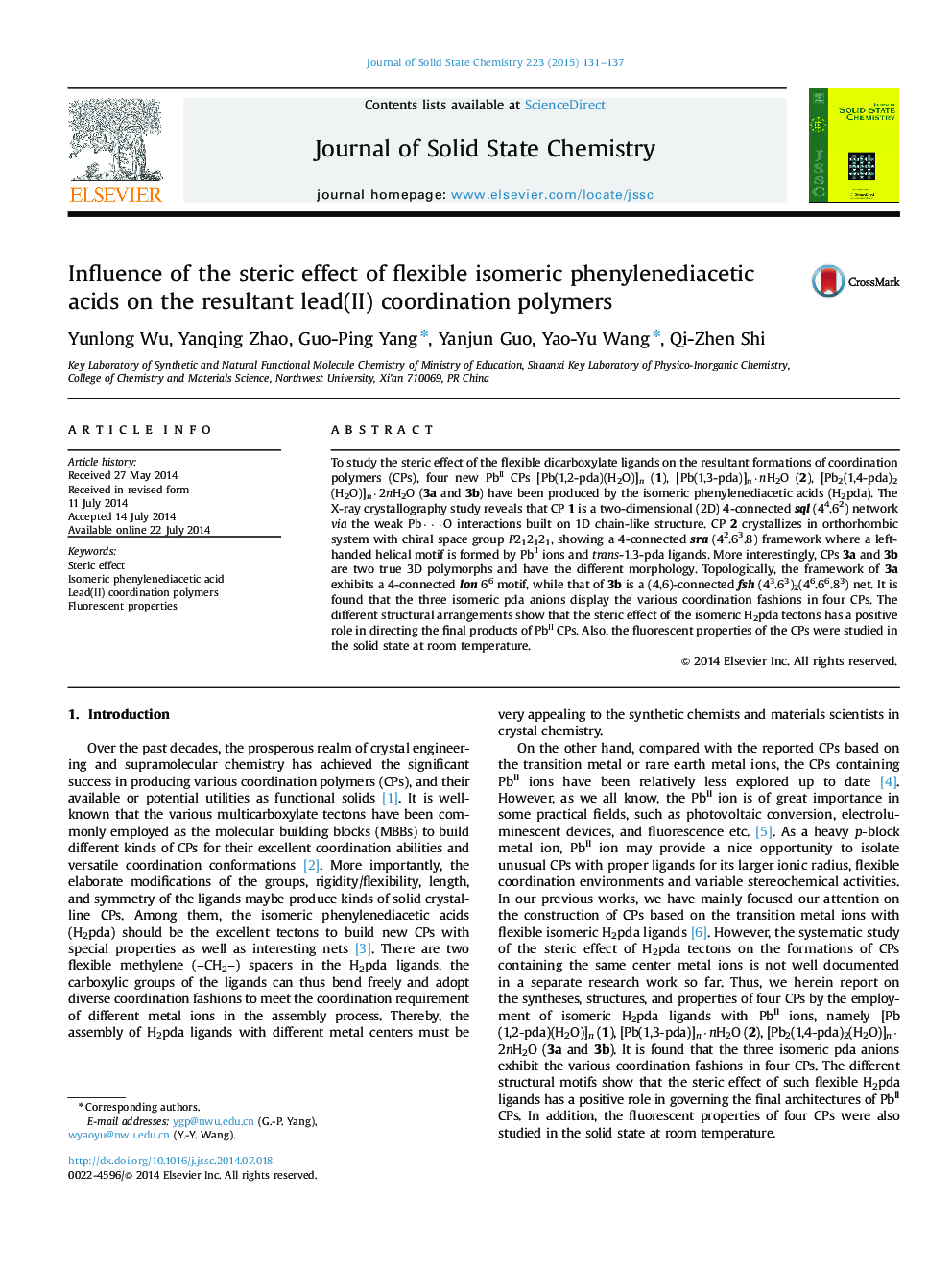| Article ID | Journal | Published Year | Pages | File Type |
|---|---|---|---|---|
| 1328994 | Journal of Solid State Chemistry | 2015 | 7 Pages |
•Four PbII-based coordination polymers were produced by phenylenediacetic acids.•The crystal and topological structures of the CPs have been investigated carefully.•Different structures show the steric effect of H2pda has a role in directing CPs.•The fluorescence of the CPs were studied in the solid state at room temperature.
To study the steric effect of the flexible dicarboxylate ligands on the resultant formations of coordination polymers (CPs), four new PbII CPs [Pb(1,2-pda)(H2O)]n (1), [Pb(1,3-pda)]n·nH2O (2), [Pb2(1,4-pda)2(H2O)]n·2nH2O (3a and 3b) have been produced by the isomeric phenylenediacetic acids (H2pda). The X-ray crystallography study reveals that CP 1 is a two-dimensional (2D) 4-connected sql (44.62) network via the weak Pb···O interactions built on 1D chain-like structure. CP 2 crystallizes in orthorhombic system with chiral space group P212121, showing a 4-connected sra (42.63.8) framework where a left-handed helical motif is formed by PbII ions and trans-1,3-pda ligands. More interestingly, CPs 3a and 3b are two true 3D polymorphs and have the different morphology. Topologically, the framework of 3a exhibits a 4-connected lon 66 motif, while that of 3b is a (4,6)-connected fsh (43.63)2(46.66.83) net. It is found that the three isomeric pda anions display the various coordination fashions in four CPs. The different structural arrangements show that the steric effect of the isomeric H2pda tectons has a positive role in directing the final products of PbII CPs. Also, the fluorescent properties of the CPs were studied in the solid state at room temperature.
Graphical abstractFour new PbII-based CPs have been produced by the isomeric phenylenediacetic acids (H2pda). The different structural arrangements show that the steric effect of the isomeric H2pda tectons has a positive role in directing the final products of PbII CPs. Also, the fluorescent properties of the CPs were studied in the solid state at room temperature.Figure optionsDownload full-size imageDownload as PowerPoint slide
